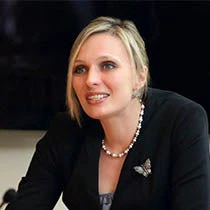 Having lived through the 1989 fall of the Berlin wall – and its subsequent domino effect through the region– we have been watching the ongoing Arab Spring with a strong sense of familiarity. Yet, in spite of the obvious parallels between the two, it seems to us that it is another series of events in Eastern Europe – this time during the 2000s – that may prove to be the more enlightening comparison: What can the Color Revolutions teach us about aftermath of the Arab Spring? What can they tell us about the sustainability of democratic gains and the possibility of democratic reversals?
Having lived through the 1989 fall of the Berlin wall – and its subsequent domino effect through the region– we have been watching the ongoing Arab Spring with a strong sense of familiarity. Yet, in spite of the obvious parallels between the two, it seems to us that it is another series of events in Eastern Europe – this time during the 2000s – that may prove to be the more enlightening comparison: What can the Color Revolutions teach us about aftermath of the Arab Spring? What can they tell us about the sustainability of democratic gains and the possibility of democratic reversals?
Recently, The Economist ran a sharp piece on the events that unfolded in Egypt and Tunisia, observing that toppling leaders is quite different from disposing of governments. While one man may fall quickly, entrenched regimes are much harder to remove. This, in a nutshell, has been rather evident in the aftermath of the Color Revolutions – most notably in Ukraine. So what were the missed opportunities there? And how might this be relevant in the current situation in the Arab world?
In a policy brief aptly titled “Will the Arab World Follow Ukraine’s Path?” Vira Nanivska observes that democratic reversals follow democratic revolutions not because of the personalities of the leaders, but because of the lack of democratic transformation in the institutions. She goes on to suggest that the international community’s role in post-revolutionary environments should therefore be one of strengthening democratic institutions. Phil Keefer makes a similar point, observing that in the absence of collective action by citizens and bureaucracies, the transition from disorganized autocracy to disorganized democracy may not necessarily lead to improvements in development prospects.
However, as Robert Putnam has most famously argued, the social capital that allows collective action problems to be solved locally and nationally takes decades, if not centuries, to build. This timeframe to build or rebuild institutions is far too long to satisfy either citizens or the donor community, who expect to see "results" fairly quickly. And as we all know, patience is a luxury that few politicians can afford. This is why leadership matters and why we need to understand better how leaders can use the momentum of a civic revolutionary movement to catalyze real changes in the governance of their societies.
Like their East European predecessors, the new political leaders across the Middle East need strategies to deliver rapid ‘results’ while not being inconsistent with the longer-term goal of institution building. What might such strategies consist of? Looking at the Ukraine and her neighbors, we offer three tentative suggestions (tentative because we are not experts on the Middle East and suspect the differences across countries may be large):
(i) establish basic rules of the game early on, ideally choosing prominent and recognizable signals. In Ukraine, for example, the privatization of Krivorizhstal by the Timoshenko government was a positive signal of a commitment to better governance that reverberates to this day. While the lack of follow-up on the murder of a prominent journalist (the "Gongadze case") or the non-transparent gas deal involving an economically redundant 'middleman' company - RosUkrEnergo – signaled the opposite.
(ii) retain legitimacy by delivering some visible improvements to the population quickly. Georgian President Saakashvilii's reform of the road police and generally decisive moves to stamp out administrative corruption are excellent examples how this can be done even when underlying institutional capacity is low.
(iii) uphold the reform process by building sustainable pro-reform coalitions. These coalitions will reward leaders for carrying through reforms. Whether these exist in the country or can be created is not clear ex ante. Accountability at all levels of government and inviting citizen feedback and participation are important complements to strong leadership.
Given these suggestions, what can we at the World Bank do to help? We need to start off by better understanding the conditions for collective action and make educated guesses about how willing political leaders are to champion institutional transformation. This is an important step and we must be open to making substantial investment in the information-gathering process. Where we find willing and capable leaders, we should leverage such leadership decisively and find ways to galvanize support quickly. Many Ukrainian observers have lamented that external support was slow to emerge after the Orange Revolution and hence expectations were quickly disappointed, allowing the stalwarts of the old regime to regain political support.
Furthermore, we must work with champions to help them demonstrate commitment to reform early on, and follow this up by focusing on interventions that deliver results quickly, thereby reinforcing expectations and generating trust. In situations where the basic conditions for collective action are weak, assistance needs to be targeted towards opening the space for participation and accountability. In this case, expectations of both citizens and donors will need to be managed – transitions to good governance may take time in such circumstances.
One final hopeful note: even when the initial heady expectations may be disappointed, political transitions may provide a second chance. Indeed, we believe there is still everything to play for in Ukraine. Its democratic institutions may not be as strong as they were in eastern Europe in the 1990s, but its civil society and media are among the most vibrant and sophisticated in the former Soviet Union. Much will depend on the willingness of the current leadership.
The ultimate verdict on the “Color Revolutions” is still out. But the experience of the former Soviet Republics to date may provide valuable insights into the risks and opportunities that lie in the aftermath of a political transformation in Europe’s neighborhood. We must use these lessons wisely to ensure the enthusiasm and excitement surrounding the Arab Spring lives up to its promise.
Photocredit: flickr user Gueorgui



Join the Conversation